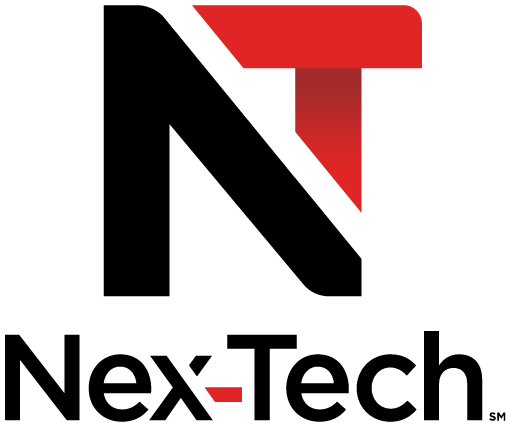Glossary of Terms
Glossary is usually defined as an alphabetical list of technical terms in some specialized field of knowledge. This knowledge base glossary provides a collection of knowledge base documents that define many technical terms. These terms are arranged alphabetically, but you can quickly jump to a specific term by selecting its first letter from the index of the knowledge base glossary below.
Bandwidth
Bandwidth describes the maximum data transfer rate of a network or Internet connection. It measures how much data can be sent over a specific connection in a given amount of time. For example, a gigabit Ethernet connection has a bandwidth of 1,000 Mbps, (125 megabytes per second). An Internet connection via cable modem may provide 25 Mbps of bandwidth.
While bandwidth is used to describe network speeds, it does not measure how fast bits of data move from one location to another. Since data packets travel over electronic or fiber-optic cables, the speed of each bit transferred is negligible. Instead, bandwidth measures how much data can flow through a specific connection at one time.
Buffer
A buffer contains data that is stored for a short amount of time, typically in the computer’s memory (RAM). The purpose of a buffer is to hold data right before it is used. For example, when you download an audio or video file from the Internet, it may load the first 20% of it into a buffer and then begin to play. While the clip plays back, the computer continually downloads the rest of the clip and stores it in the buffer. Because the clip is being played from the buffer, not directly from the Internet, there is less of a chance that the audio or video will stall or skip when there is network congestion.
demarcation point (demarc)
Is the point at which operational control or ownership of communication facilities changes from one organizational entity to another. This is usually referred to as the interface point between customer premises equipment and external network service provider equipment.
DHCP
Stands for "Dynamic Host Configuration Protocol." A network server uses this protocol to dynamically assign IP addresses to networked computers. The DHCP server waits for a computer to connect to it, then assigns it an IP address from a master list stored on the server.
DNS
Stands for "Domain Name System." The primary purpose of DNS is to keep Web surfers sane. Without DNS, we would have to remember the IP address of every site we wanted to visit, instead of just the domain name. Can you imagine having to remember "17.254.3.183" instead of just "apple.com"?
DNS Hijacking
Windows uses registry values to help resolve domain names into IP Addresses. Hijacking these values can cause all programs that use the internet to be redirected to other pages for what appears to be no reason.
DVR
A digital video recorder (DVR), sometimes referred to by the merchandising term personal video recorder (PVR), is a consumer electronics device or application software that records video in a digital format to a disk drive, USB flash drive, SD memory card, SSD or other local or networked mass storage device.
EAS
The EAS is a national public warning system that requires broadcasters, cable television systems, wireless cable systems, satellite digital audio radio service (SDARS) providers, and direct broadcast satellite (DBS) providers to provide the communications capability to the President to address the American public during a national emergency. The system also may be used by state and local authorities to deliver important emergency information, such as AMBER alerts and weather information targeted to specific areas.
FakeAV
FakeAV or Fake AntiVirus, also known as Rogue AntiVirus, Rogues, or ScareWare, is a class of malware that displays false alert messages to the victim concerning threats that do not really exist. These alerts will prompt users to visit a website where they will be asked to pay for these non-existent threats to be cleaned up. The FakeAV will continue to send these annoying and intrusive alerts until a payment is made.
FTP
Stands for "File Transfer Protocol." It is a common method of transferring files via the Internet from one computer to another.
FTTP
Fiber-To-The-Premises (FTTP) is a technology for providing Internet access by running fiber optic cable directly from Nex-Tech to a customer’s home or business. It facilitates much faster speeds than dial-up and most coaxial cable Internet connections, and generally needs to be serviced less. It’s also considered one of the most "future proof" types of Internet technology, since there are no foreseeable devices that could use more bandwidth than can be sent via fiber optic cables.
HDTV
Stands for "High Definition Televsion." HDTV is a high-quality video standard developed to replace older video formats often referred to as SDTV (standard definition television).
Home Network
A home network or home area network (HAN) is a type of local area network that develops from the need to communicate and transfer information among digital devices present inside or within the close vicinity of a home.
HTML
Stands for "Hyper-Text Markup Language." This is the language that Web pages are written in. Also known as hypertext documents, Web pages must conform to the rules of HTML in order to be displayed correctly in a Web browser. The HTML syntax is based on a list of tags that describe the page’s format and what is displayed on the Web page
HTTP
Stands for "HyperText Transfer Protocol." This is the protocol used to transfer data over the internet. That’s why all Web site addresses begin with "http://". Whenever you type a URL into your browser and hit Enter, your computer sends an HTTP request to the appropriate Web server. The Web server, which is designed to handle HTTP requests, then sends to you the requested HTML page
Malware
Short for "malicious software," malware refers to software programs designed to damage or do other unwanted actions on a computer system. In Spanish, "mal" is a prefix that means "bad," making the term "badware," which is a good way to remember it (even if you’re not Spanish).
NAT
Stands for "Network Address Translation." NAT translates the IP addresses of computers in a local network to a single IP address. This address is often used by the router that connects the computers to the Internet. The router can be connected to a DSL modem, cable modem, T1 line, or even a dial-up modem. When other computers on the Internet attempt to access computers within the local network, they only see the IP address of the router. This adds an extra level of security, since the router can be configured as a firewall, only allowing authorized systems to access the computers within the network.
ONT
The Optical Network Terminal (ONT) is a small network interface device that Nex-Tech has installed on the outside wall of your location. There is a power cable that goes to the inside of your home to a Battery Back-Up Unit that is plugged into a standard AC outlet. You will first want to make sure that this power cable is plugged in and getting power. The Batter Back-up Unit will supply power to the ONT if the power has gone out or if the unit has become unplugged.
OS
An operating system (OS) is a collection of software that manages computer hardware resources and provides common services for computer programs. The operating system is an essential component of the system software in a computer system. Application programs usually require an operating system to function.
POP3
Stands for "Post Office Protocol." POP3, sometimes referred to as just "POP," is a simple, standardized method of delivering e-mail messages. A POP3 mail server receives e-mails and filters them into the appropriate user folders. When a user connects to the mail server to retrieve his mail, the messages are downloaded from mail server to the user’s hard disk.
PPPoE
Stands for "Point-to-Point Protocol over Ethernet." PPPoE is a network configuration used for establishing a PPP connection over an Ethernet protocol.
PPV
Pay Per View (PPV) is a term used for a show that is pay to watch basis. It is usually provided by cable companies.
Pshing
Phishing is the act of attempting to acquire information such as usernames, passwords, and credit card details (and sometimes, indirectly, money) by pretending to be a trustworthy company or person in an email.
SMTP
Stands for "Simple Mail Transfer Protocol." This is the protocol used for sending e-mail over the Internet. Your e-mail client (such as Outlook, Eudora, or Mac OS X Mail) uses SMTP to send a message to the mail server, and the mail server uses SMTP to relay that message to the correct receiving mail server. Basically, SMTP is a set of commands that authenticate and direct the transfer of electronic mail. When configuring the settings for your e-mail program, you usually need to set the SMTP server to your local Internet Service Provider’s SMTP settings (i.e. "smtp.yourisp.com"). However, the incoming mail server (IMAP or POP3) should be set to your mail account’s server (i.e. hotmail.com), which may be different than the SMTP server.
Spyware
As the name implies, this is software that "spies" on your computer. Nobody likes to be spied on, and your computer doesn’t like it either. Spyware can capture information like Web browsing habits, e-mail messages, usernames and passwords, and credit card information.
TCP/IP
Stands for "Transmission Control Protocol/Internet Protocol." These two protocols were developed in the early days of the Internet by the U.S. military. The purpose was to allow computers to communicate over long distance networks. The TCP part has to do with the verifying delivery of the packets. The IP part refers to the moving of data packets between nodes. TCP/IP has since then become the foundation of the Internet. Therefore, TCP/IP software is built into all major operating systems, such as Unix, Windows, and the Mac OS.
URL
Stands for "Uniform Resource Locator." A URL is the address of a specific Web site or file on the Internet. It cannot have spaces or certain other characters and uses forward slashes to denote different directories.
VOD
Video On Demand (VOD) is a term used for a show or movie that is shown at any given time usually based on a customer’s packages from their cable provider.
Voice over Internet Protocol (VoIP)
a communications protocol that allows for telephonic communication via the Internet.
Web Cache
A web cache is a mechanism for the temporary storage (caching) of web documents, such as webpages and images, to reduce bandwidth usage, server load, and perceived lag.
WEP
Stands for "Wired Equivalent Privacy." WEP is a security protocol for Wi-Fi networks. Since wireless networks transmit data over radio waves, it is easy to intercept data or "eavesdrop" on wireless data transmissions. The goal of WEP is to make wireless networks as secure as wired networks, such as those connected by Ethernet cables.
WPA/WPA2
Wi-Fi Protected Access (WPA) and Wi-Fi Protected Access II (WPA2) are two security protocols and security certification programs developed by the Wi-Fi Alliance to secure wireless computer networks.

